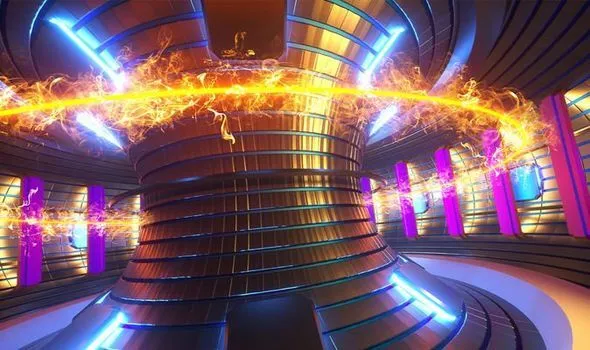Korea's Fusion Reactor Runs 7 Times Hotter than Sun

The team at the Korea Superconducting Tokamak Advanced Research (KSTAR) device reached an ion temperature of above 100 million degrees Celsius (180 million degrees Fahrenheit), the Journal New Scientist reported.
The reaction was only stopped after 30 seconds because of hardware limitations.
KSTAR uses magnetic fields to generate and stabilize ultra-hot plasma, with the ultimate aim of making nuclear fusion power a reality.
You can see the footage below showing the reactor run over 24 seconds, and achieving a temperature of more than 10^8 Kelvin – which is more or less equivalent to 100 million degrees Celsius.
One of the KSTAR researchers, Yong-Su Nas said that longer periods should be possible in future after upgrades to the device.
This is an exciting achievement for good reason – a potentially unlimited source of clean energy that could transform the way we power our lives, if we can get it to work as intended.
But it's also worth noting that this advance by KSTAR isn't necessarily a brand new record, as some media are touting.
In fact, KSTAR announced this breakthrough back in 2020, and we reported on it at the time.
However, in the years since, the KSTAR team has broken their own record, and China's 'artificial Sun' known as EAST (Experimental Advanced Superconducting Tokamak or HT-7U) has gone on to smash both of those.
In 2021, the Chinese Academy of Sciences' fusion machine reached 120 million degrees Celsius (216 million degrees Fahrenheit) and clung onto it for 101 seconds.
That's not to say the KSTAR achievement still isn't huge and worth sharing and celebrating.
Before this breakthrough, the threshold of 100 million degrees hadn't been breached for more than 10 seconds.
"The technologies required for long operations of 100 million-degree plasma are the key to the realization of fusion energy," said nuclear physicist Si-Woo Yoon, a director at the KSTAR Research Centre at the Korea Institute of Fusion Energy (KFE) back in 2020.
"The KSTAR's success in maintaining the high-temperature plasma for 20 seconds will be an important turning point in the race for securing the technologies for the long high-performance plasma operation, a critical component of a commercial nuclear fusion reactor in the future."
Key to the leap to 20 seconds was an upgrade to the Internal Transport Barrier (ITB) modes inside the KSTAR. These modes aren't fully understood by scientists, but on the simplest level they help to control the confinement and the stability of the nuclear fusion reactions.
The KSTAR is a tokamak-style reactor, similar to the one that recently went online in China, merging atomic nuclei to create these huge amounts of energy (as opposed to nuclear fission used in power plants, which splits atomic nuclei apart).
Fusion devices like KSTAR use hydrogen isotopes to create a plasma state where ions and electrons are separated, ready for heating – the same fusion reactions that happen on the Sun, hence the nickname these reactors have been given.
As yet, maintaining high-enough temperatures for a long enough period of time for the technology to be viable has proved to be challenging. Scientists are going to need to break more records like this for nuclear fusion to work as a power source – running off little more than seawater (a source of hydrogen isotopes) and producing minimal waste.
Despite all the work that lies ahead in getting these reactors to produce more energy than they consume, progress has been encouraging. By 2025, the engineers at KSTAR want to have exceeded the 100 million-degree mark for a period of 300 seconds.
"The 100 million-degree ion temperature achieved by enabling efficient core plasma heating for such a long duration demonstrated the unique capability of the superconducting KSTAR device, and will be acknowledged as a compelling basis for high performance, steady state fusion plasmas," said nuclear physicist Young-Seok Park, from Columbia University, back in 2020.
4155/v





















